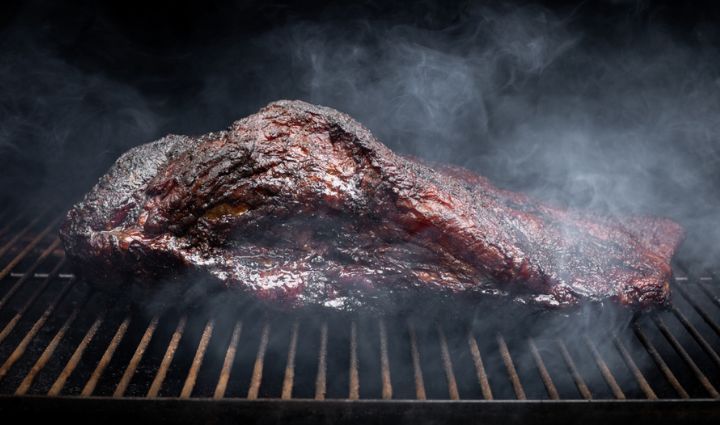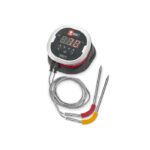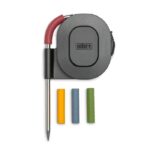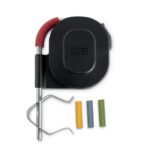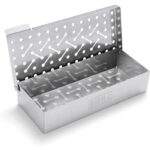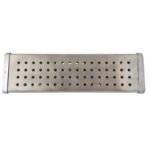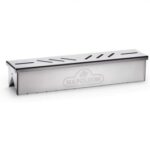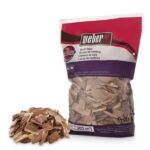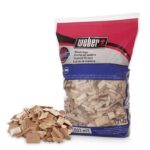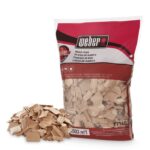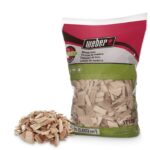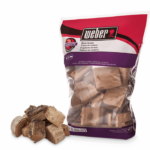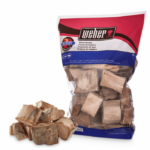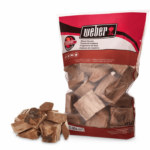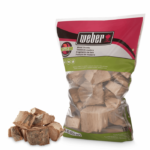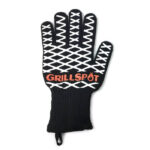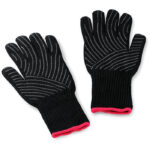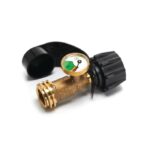Ah, the scent of woodsmoke wafting through your backyard…there’s just something about the unmistakable perfume of smoked meat that is impossible to resist. Thankfully, you don’t need an expensive smoker to make it happen.
Charcoal grills and dedicated smokers may be the preferred option for smoking meat at home, but if you only have a gas grill, there’s no reason you too can’t enjoy the delicious flavor of fresh-smoked meat. While the gaps around the lid and the burners of a gas grill do allow heat and smoke to escape more easily, it’s definitely possible to smoke meat on a gas grill with a few minor adjustments.
The key to smoking meat on a gas grill is controlling the temperature over long periods. You don’t want your temperature to exceed 300 at any time during the cooking process, nor do you want to expose your meat to direct heat. It may sound straightforward, but it can take a bit of practice to perfect your set up.
In this post, we’ll share a simple three-step guide to how to smoke meat on a gas grill, including:
- Setting up heat zones
- Adding smoke
- Actually smoking and cooking your meat
Let’s get cooking.
How To Smoke Meat on a Gas Grill
1. Set up your heat zones
When smoking meat (or anything) on a gas grill, the trick to maintaining the right temperature is to create a two-zone indirect heat set up. If you’re not familiar with two-zone heat set ups, it essentially means that some burners will be on and some burners will remain off. The heat generated by the burners that are on will produce smoke, fill the grill body with heat, and cook your meat by convection, even when it’s placed over the unheated burners.
Creating a two-zone heat set up for smoking meat depends on how many burners you have. On a two-burner grill, simply turn one burner on and leave the other burner off.
On a three-burner grill, use one of the following setups:
On a four-burner grill, try one of these options:
Setting up your grill this way creates a hot zone and a cool zone. Your wood chips or chunks will be placed over the hot zone, and your meat will be placed in the cool zone. Be patient here—figuring out the right burner configuration can take some time, and you may have to experiment to determine the best way to maintain a grill temperature between 225-250.
How to monitor internal grill temperature
When you’re cooking at low temperatures, maintaining the correct temperature can be a challenge. Keeping the lid closed as much as possible will help you maintain the correct internal temperature. You can also add a water pan (an aluminum drip pan filled with water) to help stabilize the grill temperature. A water pan will add humidity and act as a heat sink, but it won’t get hot enough to boil and steam your meat.
Most grills have ahood-mounted thermometer, and while these can work in a pinch, they are not always as accurate as you need for something like smoking. If you plan to smoke on your gas grill, it’s well worth investing in a digital grill thermometer, ideally a dual-probe thermometer that will allow you to monitor the temperature of your grill as well as the temperature of your meat as it is cooking.
Shop for probe thermometers:
On larger grills, place the probe a maximum of 1 inch from the surface of the meat so you can accurately measure the temperature as close as possible to the grilling surface. On smaller grills, place the probe at least 1” away from the wall of the smoker box or grill body so your temperature readings aren’t impacted by surface heat emanating from these spots.
2. Adding smoke
Now that your grill is set up for two heat zones, it’s time to sort out the smoke.
To produce smoke, you need wood to combust. For grillers, this means chips, chunks, or pellets. Once your grill is heated, place the wood of your choice in the hot zone. Wait till you start seeing wisps of smoke, then add your meat to the cool zone.
How do you use wood chips on a gas grill?
To use wood chips on a gas grill, you need a smoker box. Once you have a smoker box, you simply fill it with the wood chips of your choice and place it in the hot zone.
GRILL SPOT TIP: Keep extra chips handy so you can refill your smoker box every 30-60 minutes as needed. You can also invest in a second smoker box so you can easily remove the burned chips and replace them quickly.
If you don’t have a smoker box, you can also DIY one using heavy duty aluminum foil or a foil pan with tin foil as a lid. All you have to do is place some chips in the center of a piece of foil, close the packet, and poke some holes to allow oxygen to enter and exit the pack. This is a great way to experiment with smoking, but it’s important to note that with foil packs, wood chips tend to burn faster. If you plan to smoke more often, it’s definitely worth investing in a smoker box (or two).
It’s often recommended that you soak your wood chips for 30 minutes before you put them on the smoker so they don’t catch fire. You may not need to do this with a smoker box because they have a sturdier bottom, but if you’re using foil, soaking your chips can help extend their smoking time (and save you from replacing them faster than you’d like).
How to use wood chunks on a gas grill
Wood chunks can be placed directly on your grill’s flavorizer bars or heat plates. Remove the grill grates and set your wood chunks in place—just be careful they don’t come into direct contact with the flame or else they will burn. You can also wrap them in foil to prevent flare ups.
How to use pellets on a gas grill
To use pellets on a gas grill, you’ll need a pellet tube. Fill the tube, light one end with a lighter or blowtorch, then set it on the grill. It will burn for up to 4 hours.
3. Start smoking!
If this is your first time smoking meat on a gas grill, we recommend starting with something simple like chicken wings, ribs, or pulled pork, to give yourself a chance to nail your smoking set up.
Once you start seeing wisps of smoke from your wood chips, chunks, or pellet tube, it’s time to place your meat over the unheated portion of the grill. Close the lid and resist the urge to open it to check on your food so you can maintain the correct internal temperature. Instead, wait to check your food whenever you add more wood, or invest in a probe thermometer to monitor your meat for you.
GRILL SPOT TIP: Make sure you have a good supply of propane before you get cooking. The key to smoking is to go low and slow, so you want to make sure you have enough gas to get you through the long process. A propane gauge can be invaluable here. For longer cooks (6+ hours), you’ll want a full tank and ideally a backup tank on hand. For shorter cooks (under 6 hours), you’ll want at least half a tank.
At this point, all you need to do is wait for your meat to reach the correct internal temperature. This could take an entire day depending on what you’re cooking, but we promise it’ll be worth it.
4 Tips for Smoking Meat on a Gas Grill
Perfect your gas grill smoking experience with these tips:
- More wood isn’t always best. Too much wood can over-smoke your meat, leading to an acrid unpleasant flavor. Aim for half a cup of chips or pellets or a single chunk of hardwood for your first attempt, then add more next time if you want more smoky flavor.
- Don’t be afraid to experiment with different types of wood! Different types of wood impart different flavors that can compliment or enhance the unique flavors of different marinades or meats. Get our advice for choosing the right wood.
- If it’s cold or windy, your meat will take longer to cook. You may need to factor in at least 25% more fuel and cooking time, and you should also plan to change the chips more often on cooler or windier days.
- A high heat resistant glove will allow you to snatch your smoker box right off the grill, making it easy to refill it (or replace it) with fresh chips. Heat resistant gloves will keep your hands safe by protecting you from burns, and they also offer better grip so you can maximize your dexterity while you adjust your smoke or flip and turn items.
Shop for grilling gloves:
Wrapping Up
Though gas grills aren’t technically designed for smoking meat, it’s absolutely possible to use your gas grill as a smoker. The key is temperature control—to smoke meat on a gas grill, you need a two-zone heat set up and a steady internal grill temperature of 225-250. With the right tools and a little patience, you can enjoy the delectable scent of wood smoke and the moist, succulent taste of smoked meat from your gas grill.

